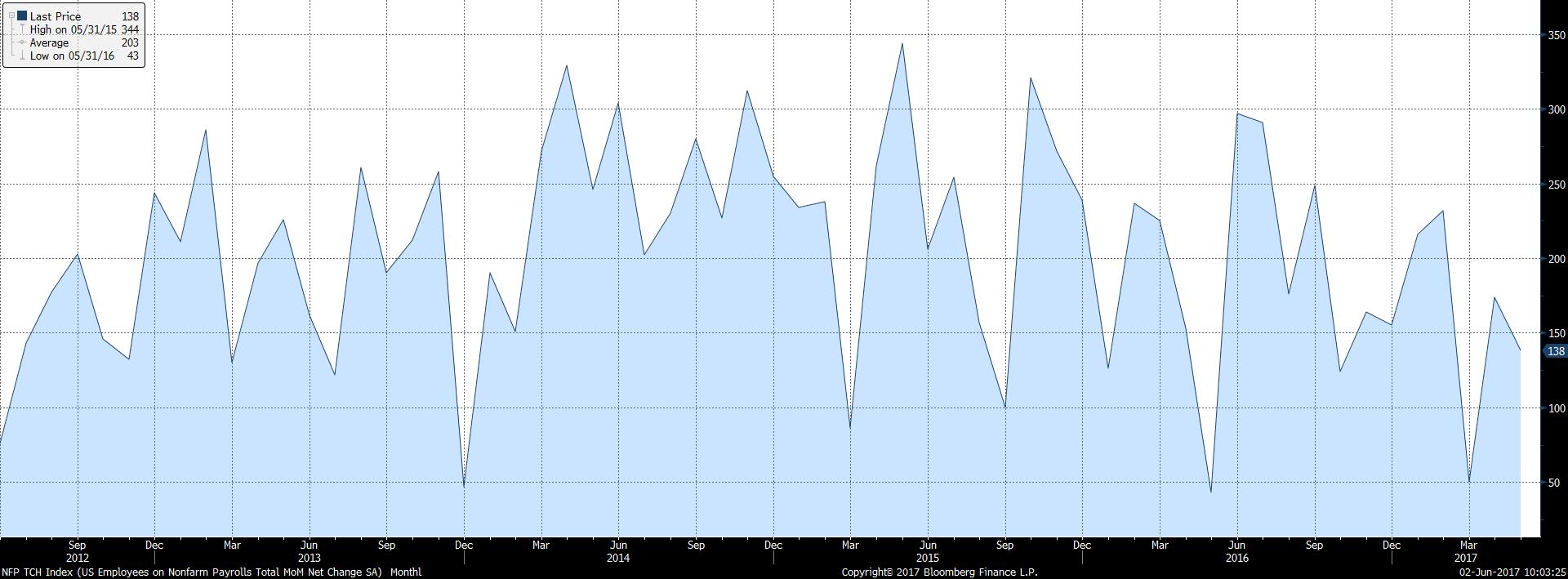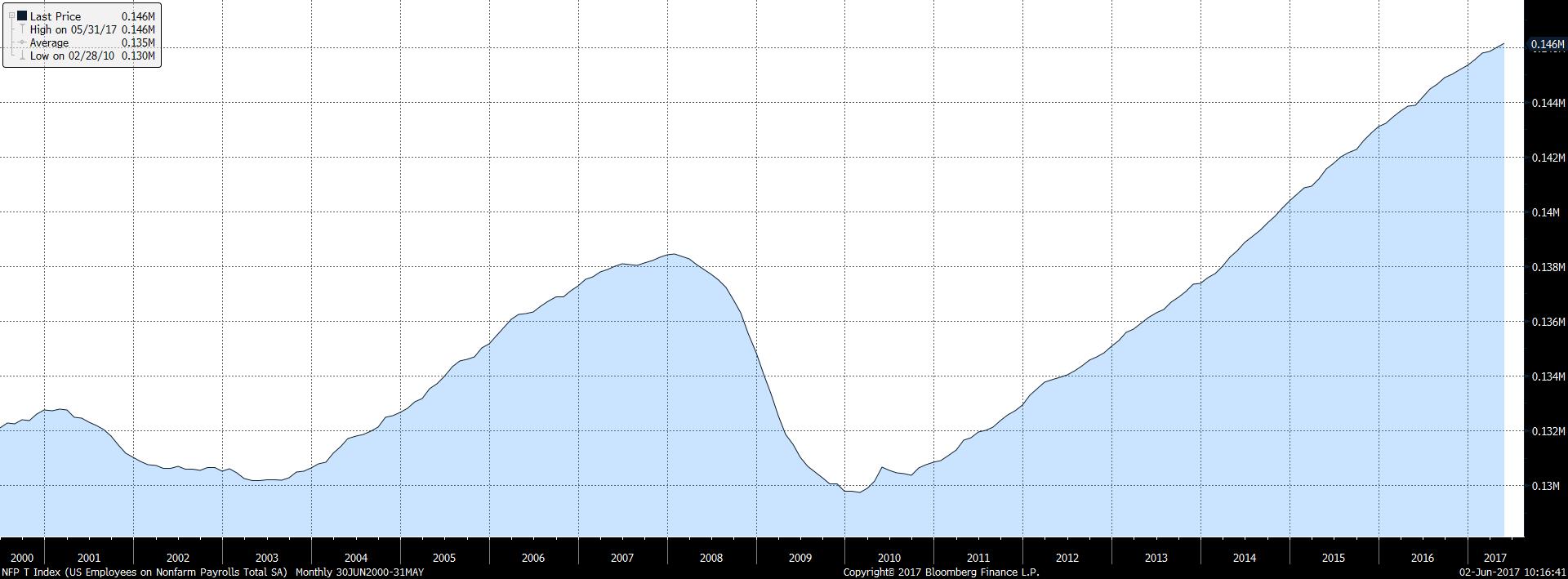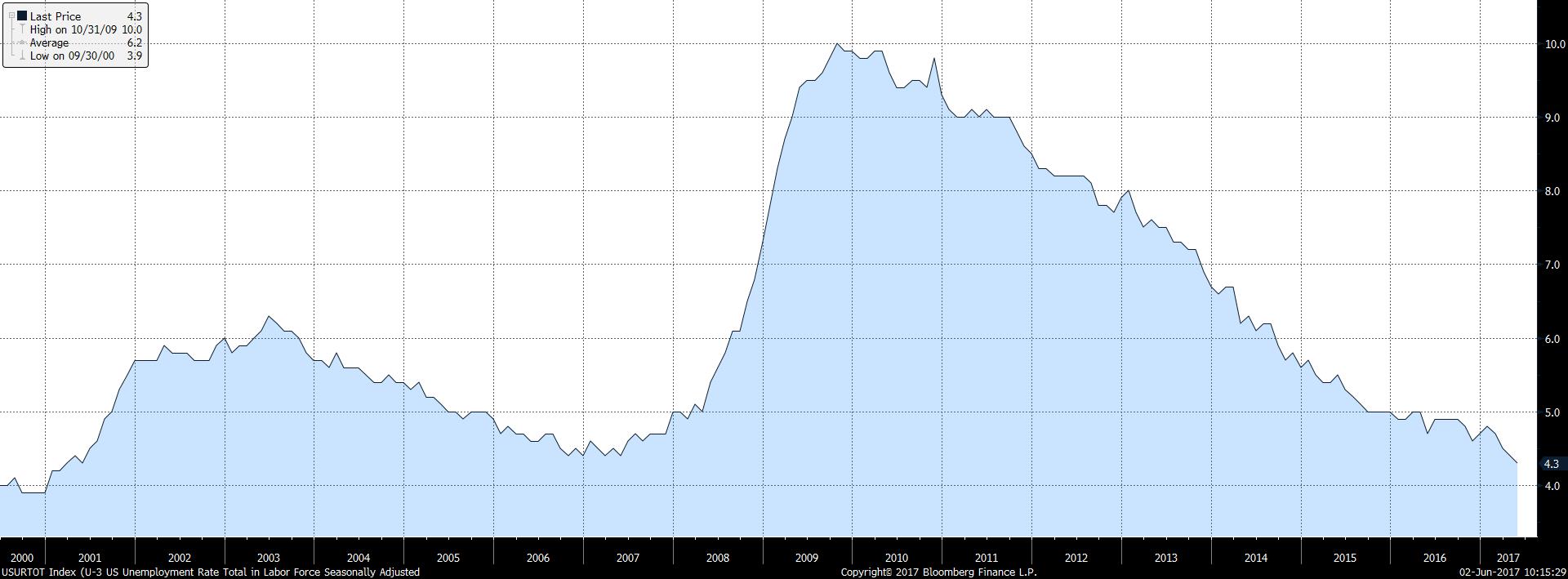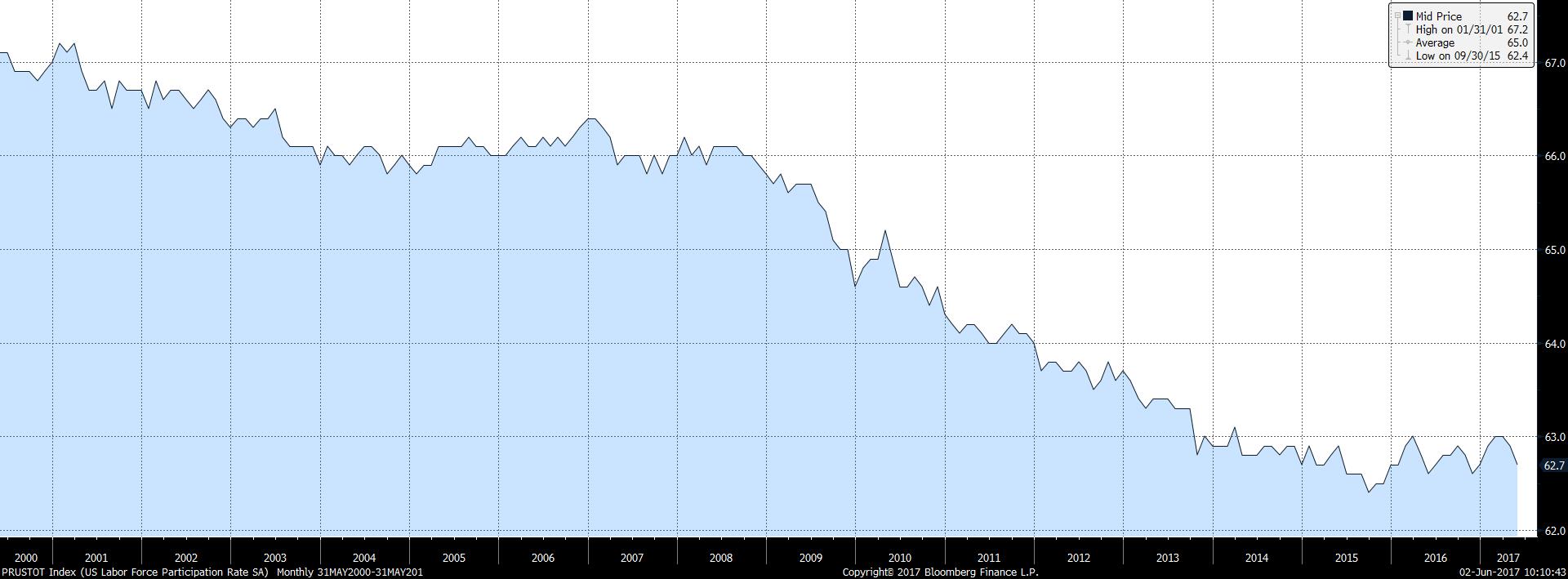Job Growth is Falling. The Sky is Not.

Today’s jobs report was disappointing: only 138,000 net new jobs created in May (the consensus had it pegged at 182,000), another 66,000 lost in revisions to the prior two months, the three-month average is trending lower with declines across all industries. Oh no! Treasury yields plunged today to the lowest levels since November, erasing all of the move following the election.
Let’s look at the employment data more closely. The first graph below shows the monthly change in non-farm payrolls over the past five years. The series is volatile, and the May print is below the average of this period, but well within the range we’ve seen over the past five years.
US Non-Farm Payrolls, Monthly Change, June 2012-May 2017

The economy has added jobs for the past 80 consecutive months. The cumulative result is seen in the graph below: a record number of employed.
US Non-Farm Payrolls, 2010-2017

The unemployment rate (U-3) fell to 4.3%, the lowest since 2001, as the next graph shows. Some think a low unemployment rate is a good thing.
US Unemployment Rate (U-3), 2000-2017

But the unemployment rate dropped last month because the labor force participation rate fell from 62.9% to 62.7% (see graph below), with the biggest decline coming from the 16-24 age group. Last month, 429,000 people who either were working or looking for work decided they no longer wanted a job.
US Labor Force Participation Rate, 2000-2017

Over the past year, the unemployment rate fell from 4.7% to 4.3% while the labor force grew 1.7 million. The economy added more than 2.2 million net new jobs in the past year, half a million more than the growth in the labor force, hence the decline in the unemployment rate.
So, yes, it may very well be that average monthly growth in jobs is falling (I suspect it is). That does not mean the sky is falling too.

